CEN and CENELEC announce that the 2025 Work Programme has been published!
The Work Programme is one of the flagship publications of CEN and CENELEC, setting out the priorities and most important actions in European standardization for the year ahead.
CEN and CENELEC are looking forward to working together with their members and partners (as ELA) and with the European institutions to build a European Standardization system that is effective, inclusive, and future-oriented, to the benefit of Europe’s economy, industry and citizens.
It’s available for you here.
CEN and CENELEC announce that the 2025 Work Programme has been published!
The Swiss Lift Association VSA has published the following leaflet on external installations in the lift shaft/machine room.
The updated leaflet is available in both German and French :
Leaflet on external installations in the lift shaft/machine room – German
Leaflet on external installations in the lift shaft/machine room – French
VSA leaflet on external installations in the lift shaft/machine room
A word from the President
This is the winter edition of the ELA newsletter. Only six months have passed since my election as President, but I can already confirm what was previously announced. During these months, I have worked a lot on the theme of unity and inclusion, trying to pool everyone’s experiences and making sure that no one could feel excluded from the Association’s activities. ELA’s doors are always open to exchanges of views, to the contribution of all those who think they can enrich the important “store of knowledge” that we have been able to accumulate over the years. I have also taken important steps to seek the re-engagement of the Czech Republic Association with ELA. On the other hand, I have also established alliances with European Associations of similar or complementary sectors to ours. The new season of relations with the renewed European institutions could represent a testing ground for this type of alliance, a moment of sharing and representing strong ELA positions to the outside world.
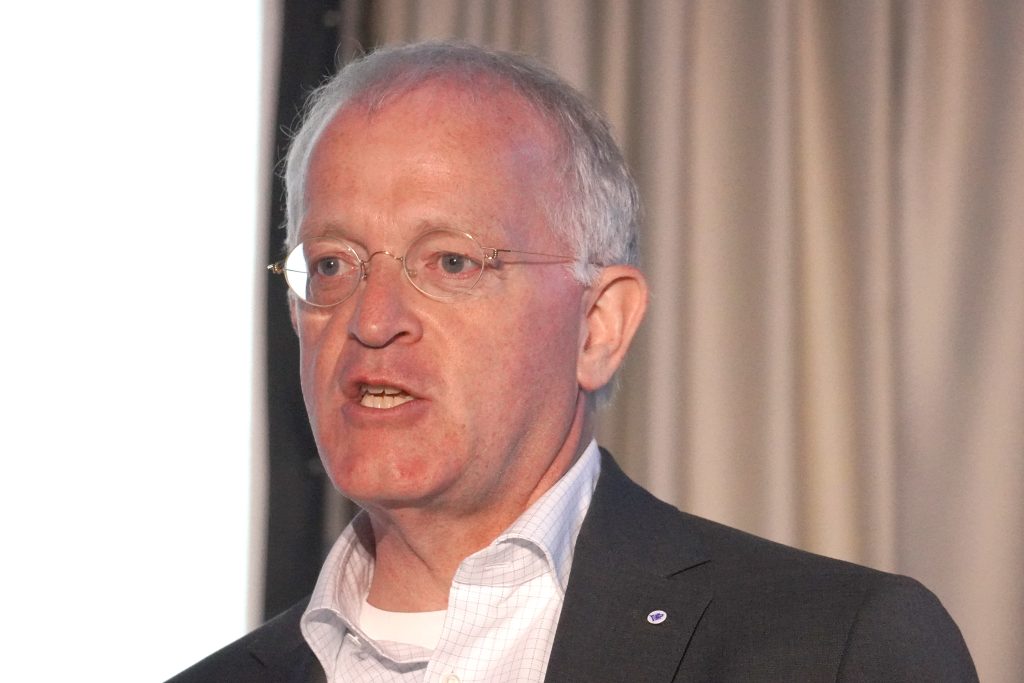
In recent months, I have also tried to facilitate interaction between ELA’s internal committees and working groups, in the absolute conviction that strong knowledge, on specific topics, should be shared and available to all! In the last couple of months, I have had the opportunity to meet some of our members in Poland, as well as in the Netherlands. In the course of 2025, I already have other important meetings on the agenda. I am convinced that it is important to further deepen the knowledge and interaction between ELA Members, so I have decided that starting from the next ELA Board meeting, in turn and in rotation, all ELA Members will have the opportunity to introduce themselves, to share their strengths and the excellence of their work. Of course, in recent months I have also represented our Association in global contexts, particularly in the framework of the Europe/China dialogue. In 2025 I am already scheduled to chair the usual meeting of members of the World Elevator & Escalator Association.
We are now approaching Christmas, so let me conclude with a strong message of good wishes that I would like to address to you and your families. A very busy year comes to an end for all of us and a new one opens with the hope that we will continue, all together, to consolidate our role as the first and most representative association in this sector in Europe. I wish you all a successful 2025.
ELA General Assembly & Conference in Warsaw (21/22 May 2025)

ELA presentation at the 1st International Smart Readiness Indicator Conference 2024!
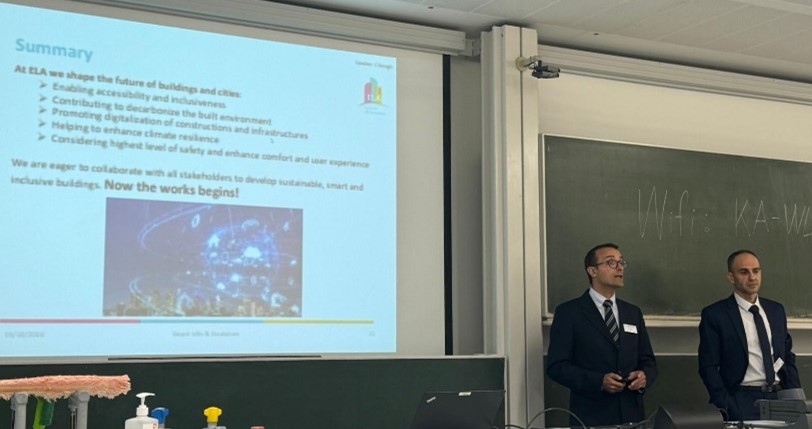
The conference was held in Karlsruhe, Germany on October 14-15, 2024.
The event aimed to give all the scientists the chance to share their SRI1) findings with anyone who’s interested.
Researchers from across Europe joined, and ELA had the privilege of hearing outstanding presentations from leading scientists, industry experts and EU policy makers. The discussions focused on how digital buildings are affecting people and the role of the SRI that opens new possibilities for the use of innovative technologies in the buildings.
The SRI is a policy initiative under EPBD2) to get people thinking about smart buildings and how these can be made more energy efficient and perform better overall.
ELA was also present at the conference, Alper CALISKAN (SRI WG3) convenor) and Claudio Donghi (SAEL4) WG convenor) delivered a presentation on the role and the contribution of the Lifts and Escalators in that area.
Main topics of their presentation were to highlight the benefits of the Smart Lifts and Escalators for valued SRI: Safety, Accessibility & Inclusiveness, Energy performance and Passenger experience.
Overall, ELA’s presentation was a success with an interactive Q&A session. The audience has now a better understanding of our solutions and is more convinced for inclusion of Lifts & Escalators into SRI metrics.
Further to the conference, a meeting was scheduled for December 2024 with one of the main EU policy contributors.
- SRI: Smart Readiness Indicator
- EPBD: Energy Performance of Buildings Directive
- WG: ELA Working Group
- SAEL: Safety Accessibility Energy Efficiency in existing Lifts
Education on standardization in Europe
On 17 June, the first conference organised by the European Commission on the subject of “Education on standardisation” was held in Delft (NL). ELA was present at the conference, which was attended by representatives from universities, industries and, of course standardisation bodies (CEN, ISO and ETSI but also DIN, BSI, AFNOR, UNI, etc.). A video by Commissioner Breton opened the conference by confirming the topic of European standardisation as a high priority for the European Commission’s action. The University of Eindhoven had a primary role and the involvement of CEN/CENELEC/ETSI was crucial.
Next to this, the Dutch Ministry of Economic Affairs was also strongly involved. The standardisation strategy will only be successful if the involvement of experts (from public administration, business…, civil society) is strong and convinced. The experts currently in place are close to retirement and the much-needed generational change is not visible on the horizon: a process must be created to stimulate the recruitment of new experts.
Standardisation training concerns everyone (citizens and companies) and must be at the centre of our action both in Europe and worldwide. But who trains the experts and at what level of education?
Education does not only come from universities but upstream and downstream from these as it often comes from a path within a company. There is also a need to provide a job perspective for those approaching the topic (market attractiveness). The important role of Industries clearly emerged. But who can provide the economic resources for training and issuing certificates? It is necessary to imagine what the incentives (not only economic) might be for both lecturers and students. The discussion will continue in 2025 taking into consideration three aspects of the topic
- Standardisation affects everyone, no one excluded
- Training at all levels to ensure generational change
- Success comes from exchanging national best practices
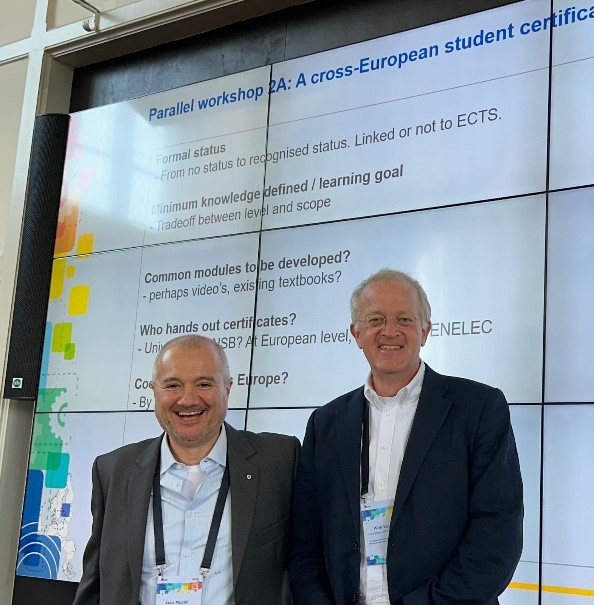
Visit to ELA by representatives of the China Academy of Building Research (CABR)
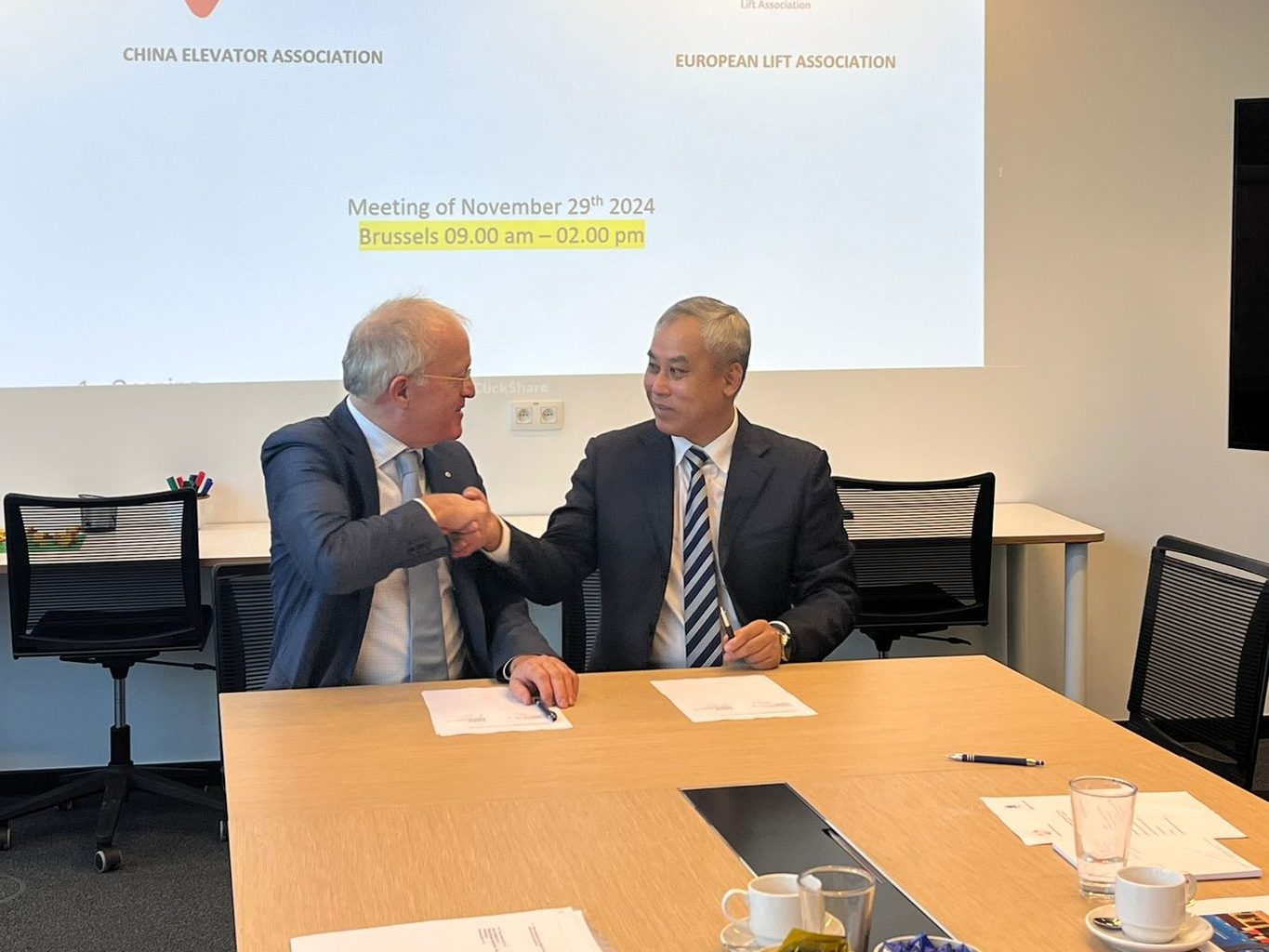
During the official visit of the prestigious Chinese representatives in Europe, a meeting was held in ELA on 29 November. President Wim Koster and the Secretary General of the China Elevator Association (CEA), Lexiang Zhang, signed a Memorandum of Understanding (MoU) on cooperation in which the strong relationship between the two Associations and the common interest in promoting further synergetic actions for the benefit of the industrial sector they both represent were renewed. A follow-up meeting will be held in March 2025, in China.
New VSA Brochures
It is a pleasure to share that Verband Schweizerischer Aufzugsunternehmen (VSA) has published three informative brochures on « Working Safely on Lifts, » offering valuable insights on the topic.
These brochures are available on the VSA Website in:
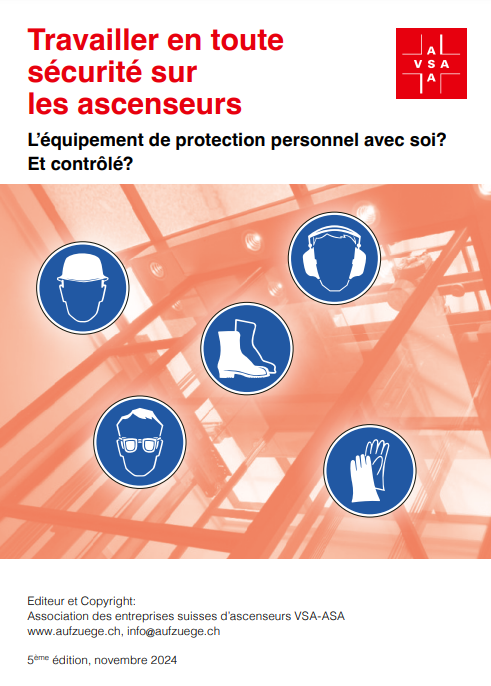
Latest news from the EU Institutions
After the European elections (6-9 June 2024) the European Council has taken important decisions on the leadership of the EU institutions for the next years:
- electing Antonio Costa as the new President of the Council of the European Union for a 2.5 year term (12/24-5/27);
- electing Kaja Kallas as High Representative for Foreign Affairs & Security Policy to lead the European External Action Service for five years (she is also VP of the EC);
- “proposing” Ursula von der Leyen as candidate for the Presidency of the European Commission. In July she was then elected as President by the European Parliament for the next five years until 2029.
During the EP First Plenary (constitutive) session in Strasbourg (16-18 July) Roberta Metsola was re-elected for another term of office as President of the European Parliament until 2027. Also, the 14 VPs were elected. All of the Parliament’s 20 standing committees and the 4 subcommittees held their constitutive meetings to elect their Chair and Vice-Chairs for a two-and-a-half-year mandate.
On 23 July, the SG of ELA sent to all the ELA members the list of their representatives in the European Parliament.
Last September, the EC President announced the proposed new team of Commissioners (one for each Member State – names as proposed by the Governments) and their respective responsibilities.
In November, there was the Hearings of the candidate Commissioners (4-12 November): each candidate Commissioner was heard and its candidacy examined by the parliamentary committee responsible for his/her proposed portfolio (it is only once all nominees have been endorsed that the MEPs vote in plenary on whether or not to approve the entire College). All received individual approval.
In December, the PRESIDENT OF THE EUROPEAN COUNCIL took office and all the Institutions became fully operative (included also the election of the European Ombudsman)
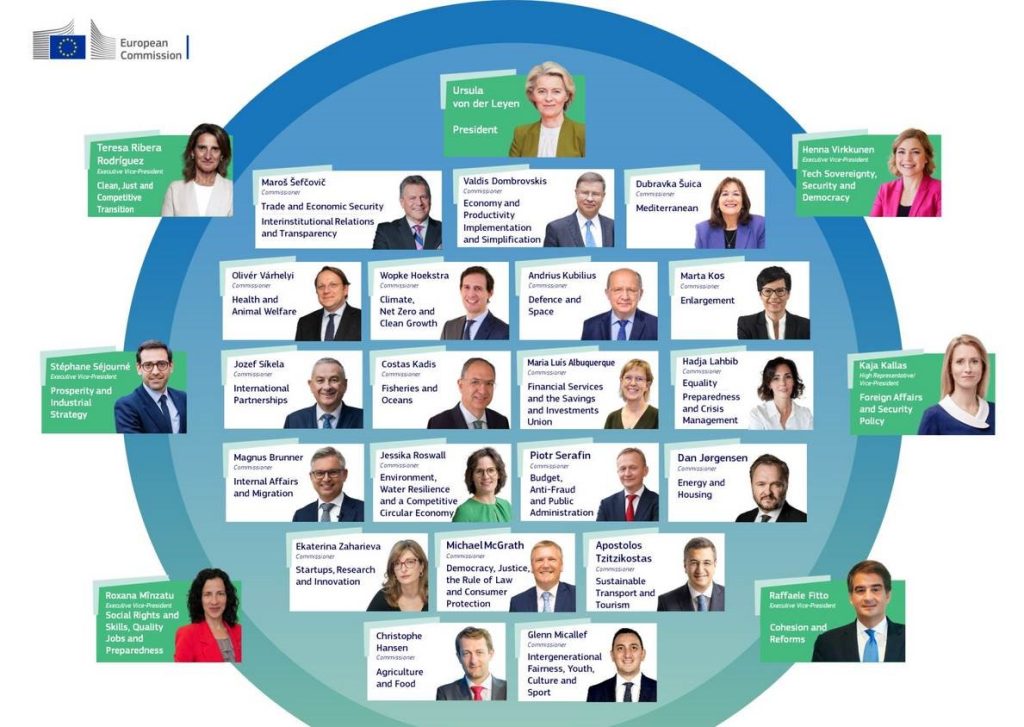
ELA Newsletter Autumn-Winter 2024
New President & Vice-President for ELA !

Firstly, I would like to take this opportunity to thank my predecessor Roberto Zappa for six years of leadership of our European Lift Association. Under his leadership, the ELA has evolved further and good results have been achieved, for example in the field of European regulation. Time moves on and over the next three years my goal is for the ELA to emphasize inclusion and unity. ELA is there for all companies in the elevator and escalator industry and through ELA we can further strengthen the representation of interests. As far as I am concerned, alliances will be sought also outside our industry. Modernizing buildings not only concerns elevators and escalators, but goes much further. So the possibility of cooperation in that area with, for example, the construction industry is at least worth investigating. The great thing about an association like our ELA is the enormous potential for knowledge. The executive work within the ELA is done by dozens of experts with different backgrounds in the working groups and committees. It is important that we further strengthen relationships and involvement within and between these groups. Knowledge resides in people and my goal for the next three years is to bring the knowledge together, work on a good strategy and implement it step by step. Ultimately, the ELA represents the interests of its members. Contact with these members is important and in addition to showing the benefits of ELA membership, listening carefully to our members is essential. Together with 16 members of the board, I am very motivated to continue to contribute to the ELA and look forward to the future. Kind regards,
Wim Koster
ELA President
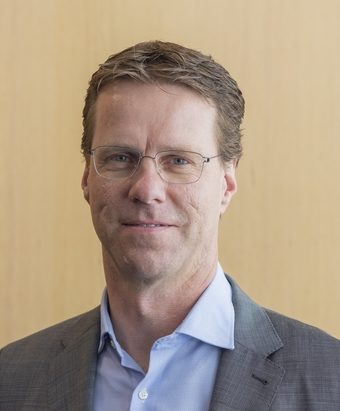
Dear Colleagues, As we navigate an increasingly complex and volatile landscape, our organization must bolster its capacity for adaptation and agile response. We are in an era marked by unprecedented change driven by innovation and sustainability. The lift industry faces numerous challenges, including the integration of digital technologies, the push for energy efficiency, and evolving the safety regulations even further. I am firmly convinced that the European Lift Association will continue to evolve together with its members to meet these challenges and future demands. I would like to take this opportunity to express my gratitude to everyone involved in ELA for your participation and dedication. Your commitment is essential in reinforcing ELA’s role as the key representative for our industry at the European level. I am proud to be part of this team and look forward to continuing our work together towards our common future. Kind regards,
Lars Gustavsson
ELA Vice President
New Faces at the Board
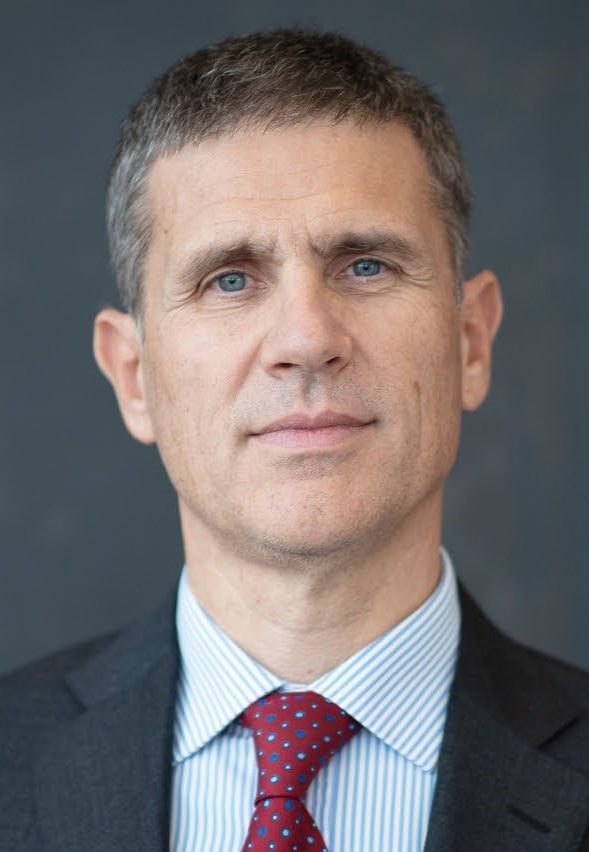

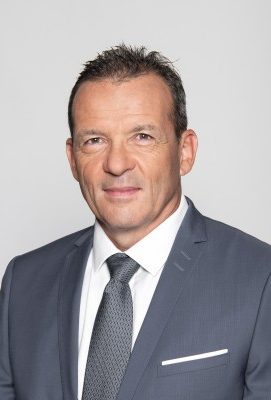

Poland LiftEXPO 01-03.10.2024
Poland has emerged as one of the European Union’s economic powerhouses, boasting a stable economy and a leading role in utilizing EU structural funds for infrastructure development. This favorable environment has greatly contributed to the stable development of the lift industry. Since joining the EU, Poland has doubled its operational lifts.
New ELA Committees & WG members
- Fabien Hauret (EEA), new member of the Statistical Committee
- Nicola Imbimbo (AssoAscensori), new member of the Codes & Standards Committee
- Svenja Lemke (EEA), new member of the Legal Committee
- Yves Gregnanin (FAS), new member of the SRI Working Group
- Sandra Cuevas (EEA), new member of the Digitalization & Cybersecurity Committee
- Paolo Airaghi (AssoAscensori), new member of the Codes & Standards Committee
- Ana Rodriguez (FEEDA), new member of the Codes & Standards Committee
- Elisabetta Gasperini (AssoAscensori), new member of the Components Committee
- Thomas Meerschaut (EEA), new member of the Budget Committee
Escalators are safe… except when they are not used safely…
And that is precisely the sticking point. We have noticed that many escalator users are still unaware of the do’s & don’ts of safe escalator use. Reason enough for Agoria and its member escalator companies to set up an awareness-raising campaign about safe escalator use. A Word from the President Agoria developed an Escalator Game under the motto ‘catch them while they’re young’. Discover it on escalatorsafety.agoria.be. Target group: 8 to 18-year-olds. But believe us, even adults will have fun playing this game. And learn something from it too! » “Instead of opting for the umpteenth video or instruction note, we chose a unique game formula in which the participants learn the 12 main rules of safe escalator use,” says Dirk De Moor, responsible for the lifts and escalators business group at Agoria. “We are convinced that learning by doing sticks better than just reading.” And… don’t forget to try the Escalator Game yourself. We’re curious to see your score! 😉 Maybe you’ll beat the top score!
Notified Bodies listed on the NANDO list to be used to certify products under the Lifts Directive
At the meeting of the European Commission’s Lifts Expert Group (November 2023), the President of the Notified Body Coordination raised an issue concerning certificates for safety components that were issued by a certification organization that was ‘not listed’ in NANDO for such tasks. A Word from the President It is important that manufacturers of safety components and installers for lifts always consult the NANDO list for the references of the Notified Body of their choice to make sure that the Notified Body is listed in NANDO and for the intended conformity assessment procedure task(s). Certificates issued by certification organizations not listed in NANDO may be considered as void. Directive Indeed, only the certification organizations listed on the EU Commission NANDO (for the Lifts see following link) are considered as the EU Notified Bodies.
Harold Bussing (KONE The Netherlands) passes VLR chairmanship to Reinier Geradts (DLR Eurlicon)
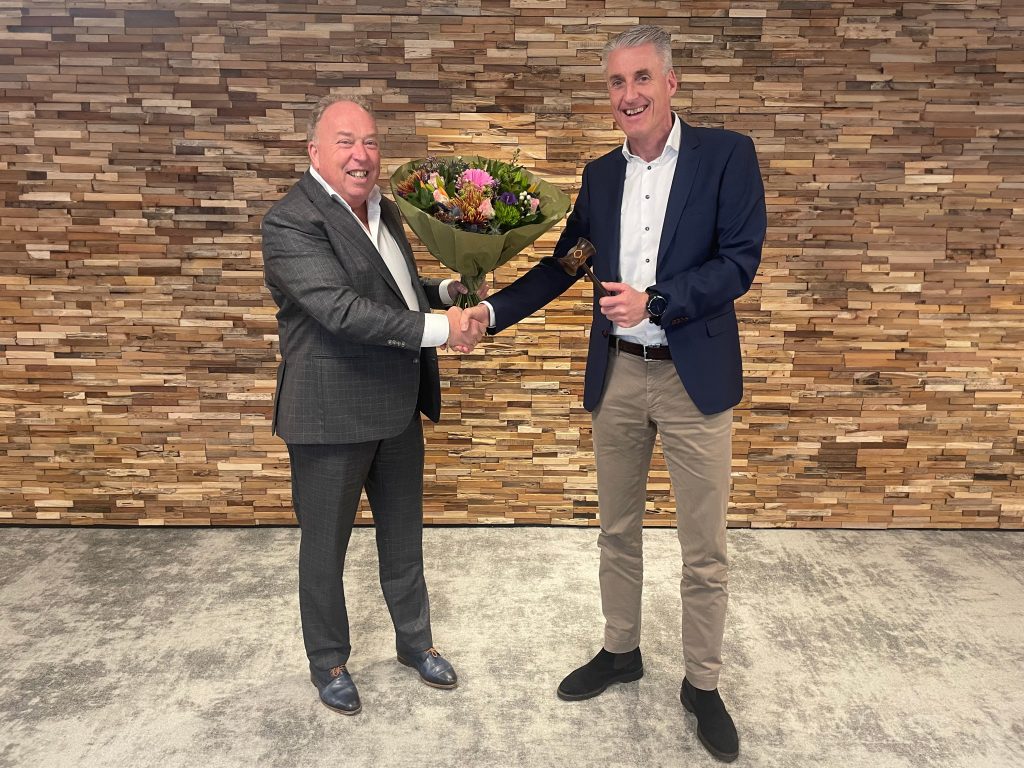
At the end of 2023, Reinier Geradts, director of DLR Eurlicon, was appointed as the new chairman of VLR, the Dutch trade association for lifts and escalators. The gavel was officially passed on by his predecessor, Harold Bussing of KONE, on March 15 during the first VLR General Assembly of this year. Bussing had been a VLR board member since 2016 and became chairman of the association two years later. Geradts has been working in the elevator and escalator industry since 1985, where he gained work experience at Schindler and ThyssenKrupp and held various positions. In 2005 he decided to start his own business and founded the Lift and Escalator advisory group, after which he became a member of VLR at the end of 2012. Geradts has been part of the VLR board since 2015. VLR is pleased that Geradts will manage the association and, in his own words, will further position VLR as a centre of competence for lifts and escalators. With Geradts as new chairman, VLR will move forward in the coming years.
Olivier Rouvière, new elected President of the French Federation
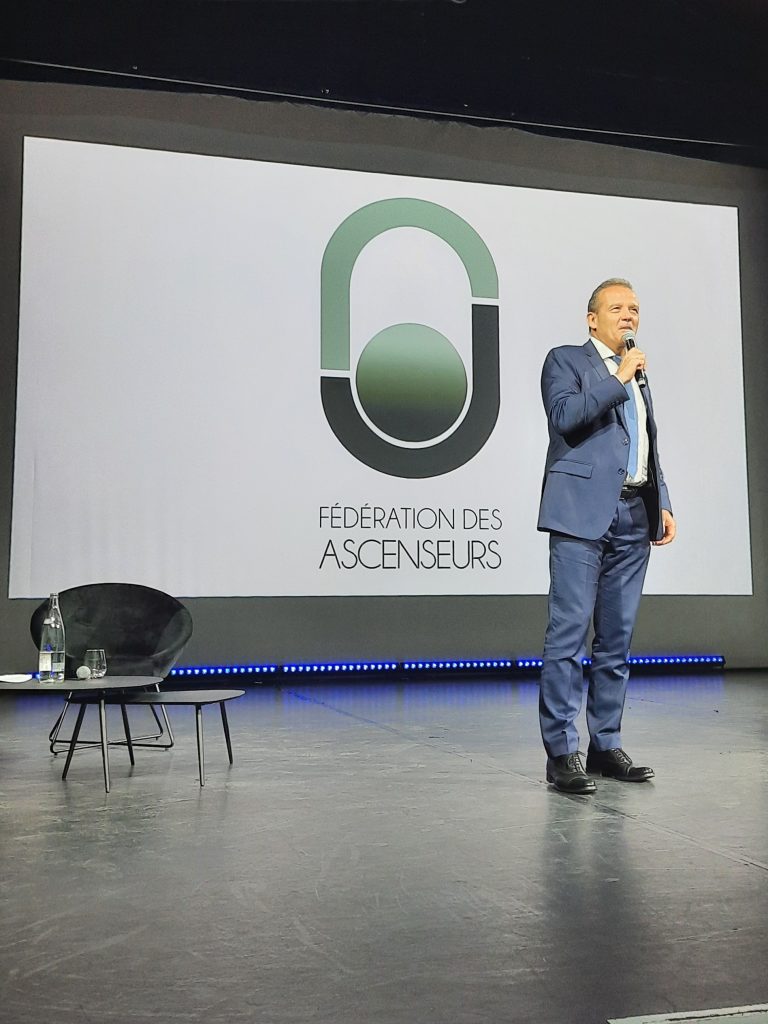
Olivier Rouvière, 61, graduated in microelectronics from INSA Lyon, holds a postgraduate degree in integrated electronics from the Ecole centrale de Lyon, is an engineer by training. He has over thirty years of experience at Otis. He was Managing Director of Otis Switzerland between 2010 and 2019, and Managing Director of Otis France from January 2019 to January 2022. On the occasion of its General Assembly on April 23, 2024, the Fédération des Ascenseurs, representative of 90% of the economic activity of the sector in France, elected Olivier Rouvière President. As part of his new mandate, he will deploy the profession’s CSR roadmap, to meet energy and demographic challenges, and give even more visibility on the know-how, trades and training in the sector.
FAS : Winner of the ELA Award 2023 !
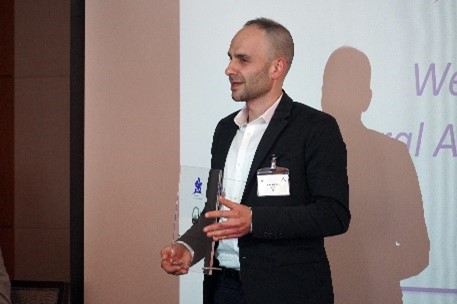
On the occasion of our ELA General Assembly in Istanbul this year, we were honoured to give the ELA Award to the Fédération des Ascenseurs for their outstanding performance in 2023.
Congratulations !
ELA General Assembly & Conference 16 & 17 May 2024 – Istanbul
In the magnificent setting of the Turkish city, the ELA Annual Conference (2024) dedicated to the topic of ‘sustainability’ took place.
As usual, it was well attended by both the international audience and the excellent speakers (representatives of European institutions, university lecturers, and experts from the lift industry).
The General Assembly took place the following day and renewed all Board members. Wim Koster (NL) was elected President for the three-year period 2024-2027.
At the first Board meeting Lars Gustavsson (SE) was elected Vice President.
Articles about our event!
ELA Newsletter Spring-Summer 2024
Introduction
Smart technologies will be an essential enabler to decarbonize the building sector, while offering healthier, more efficient, safer and comfortable living environments.
To embrace this opportunity, Member States are now officially invited to contribute to the optional pilot testing of the Smart Readiness Indicator (SRI), a rating scheme designed to assess our buildings’ capacity to accommodate smart-ready services, which was introduced in the revised Energy Performance of Buildings Directive (EPBD) and its subsequent regulations. To work hand in hand with and to support this roll-out and testing phase, the European Commission DG Energy has launched its dedicated technical assistance service for testing and implementation of the SRI.
What is SRI ?
- What makes a building smart?
The ‘smartness’ of a building refers to its ability to sense, interpret, communicate and actively respond in an efficient manner to changing conditions in relation to :
- the operation of technical building systems,
- the external environment (including energy grids),
- demands from building occupants.
The SRI rates the smart readiness of buildings (or building units) in their capability to perform 3 key functionalities:
- optimize energy efficiency and overall in-use performance,
- adapt their operation to the needs of the occupant,
- adapt to signals from the grid (for example energy flexibility).
- Advantages
The SRI will raise awareness of the benefits promised by smart building technologies, such as building automation and electronic monitoring of building systems including heating, hot water, ventilation, lighting, etc.
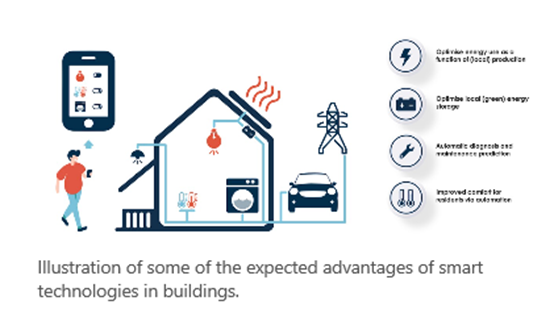
Through the implementation of the SRI framework, technological innovation in the construction sector is supported, which creates an incentive for the integration of cutting-edge smart technologies in buildings.
Further information on SRI can be found on Smart readiness indicator | Energy (europa.eu)
SRI testing and implementation
The smart readiness indicator was adopted by the revised Energy Performance of Buildings Directive “EPBD” in 2018, and its subsequent regulations (Delegated Regulation and Implementing Regulation) have triggered an optional testing and implementation phase.
Therefore, EU countries and regions may decide to implement the SRI on (part of) their territory, for all buildings or only for certain categories of buildings.
The Commission will provide support and guidance to EU countries and regions that undertake a test phase of the SRI. A FAQ will be made available and kept updated.
- SRI Platform
The SRI platform will offer a permanent forum to allow different interested parties, including private sectors, academia, Member States representatives and the Commission Services, to meet and exchange information and share experiences on national SRI testing, implementation, recommendations on possible evolutions and next steps of the SRI.
A two year service contract has been awarded to a team comprised of VITO (Belgium), Waide Strategic Efficiency Europe (Ireland), Research to Market (R2M) Solution (France) and LIST, the Luxembourg Institute of Science and Technology.
This contract will provide technical assistance to the European Commission services and to Member States in the first phases of the testing and implementation of the SRI. This will include the set-up of a direct support framework in cooperation with Member States and stakeholders, including a helpdesk and technical and training material. The contract will also assist in the preparation of implementation guidance and provide additional technical support. Finally, the contract will assist the European Commission services in the promotion of the SRI, including the establishment and operation of a SRI Platform, which will consist of a multi-stakeholder forum to support and monitor the implementation of the SRI, and to issue recommendations on possible future evolutions of the SRI.
A first meeting of the SRI platform will be planned for the end of the year. The format and timing of this meeting will be announced in later communications.
What is SRI ?
By Massimo Beccarini
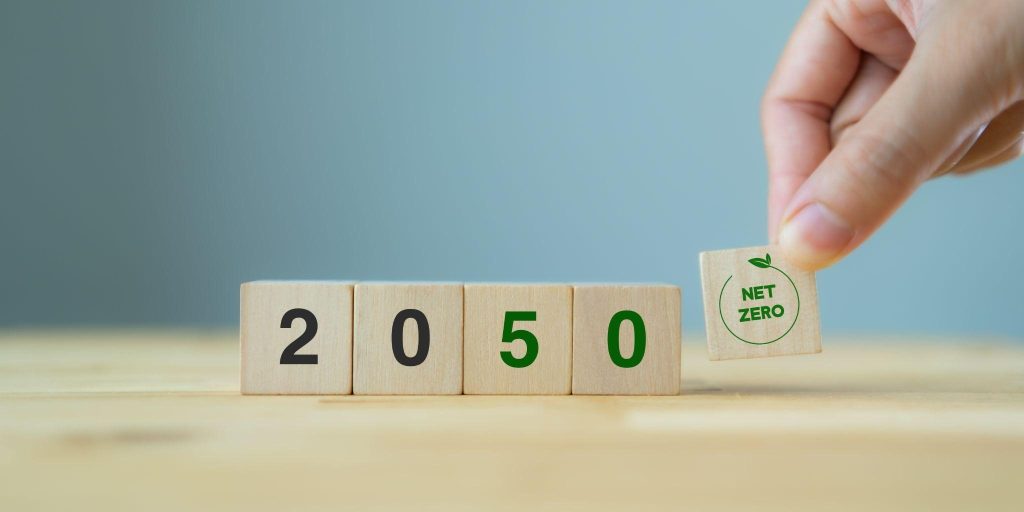
Global commitments and actions to avert the worst effects of climate change are growing, but they still fall far short of the target to limit the rise in global temperatures to 1.5 degrees Celsius. The European Commission has stated that the European building sector is the largest single energy consumer in the EU, responsible for approximately 40 percent of energy consumption and 36 percent of CO2 emissions in the EU. It is estimated that lifts consume between two and five percent of the energy consumption of buildings. The lift industry can therefore contribute towards decarbonizing the built environment by providing energy efficient solutions, and reducing the carbon emitted during the production of materials.
Net zero and the impact of the building sector
Net zero is another term for carbon neutrality; i.e. when the balance between the total amount of greenhouse gas produced and the amount removed from the atmosphere is equal. The EC has set a long-term goal of becoming climate neutral by 2050[1], in line with global commitments to secure global net zero by mid-century and keep the goal of 1.5 degrees within reach[2].
The EC has set various initiatives and schemes in place to help achieve this difficult task. These include the Recovery and Resilience Facility (RRF)[3], the European Green Deal[4] and the new Social Climate Fund[5].
The building sector is the largest single energy consumer in Europe[6]. Around 75 percent of current building stock in the EU is deemed energy inefficient, meaning that a large proportion of the energy used goes to waste. Smart solutions and energy efficient materials are needed not only for new buildings, but also for the renovation of existing buildings, which could reduce the EU’s total energy consumption by five to six percent and lower carbon dioxide emissions by about five percent. Yet, on average, less than one percent of the national building stock is renovated each year. In order to meet the EU climate and energy objectives, the current rates of renovations should at least double.
Decarbonizing these buildings in time to reach the 2050 target remains an enormous challenge, especially considering that of the buildings expected to still exist 30 years from now, an estimated 97 percent will need to be renovated to make them carbon neutral.
Renovation is key for reducing the energy consumption of buildings, for bringing down emissions and for reducing energy bills. In addition, renovation generates local jobs and economic growth, making the EU more resilient after the socio-economic impacts of the COVID-19 pandemic.
How lifts can contribute towards net zero
Older lifts can consume as much as 10 percent of a building’s energy, although this varies depending on the technology with which they operate, the number of lifts in the building, the number of floors they serve and the frequency with which they are used.
New lifts are comparatively low consumers of energy thanks to new advances in technology. But it is also possible to go a step further to achieve net zero lifts. Some of the methods of doing this are to use solar panels on the roof of the lift shaft, cables that reduce energy waste, regenerative lift drives that recapture energy when the lift is in motion, energy efficient lighting and sensors that activate lights and fans only when the lift is occupied. Relay switches can also be swapped for more energy efficient microprocessors within the control panel.
In addition to this, lift manufacturers should also work to raise awareness among customers about the benefits of energy efficient technologies, implement a strategy for attractive modernization upgrade plans, and continually work to improve sustainability and reduce their material usage and carbon footprint in operational and manufacturing processes.
The role of lift associations
As the voice of the European lift industry, ELA is working to create awareness on the role of lifts in relation to climate change. In order to effect real change, a functioning market must exist for energy‐efficient lifts and green products. Currently, market demand is limited for various reasons, mainly due to low awareness among building stakeholders on the role of the lift industry and its improvement potential to reduce energy costs needed to operate buildings. ELA’s Energy and Environment Committee is actively involved in educating construction and building industry stakeholders on how new innovations in lift technologies can bring benefits to the overall energy efficiency performance of buildings.
To move the market towards energy efficient lifts, ELA is also working to help policy makers establish an appropriate framework to support the ecological transition of the lift industry. ELA is currently lobbying the EC for the inclusion of lifts, escalators and moving walks within the Energy Performance of Buildings Directive (EPBD) in order to make a measurable contribution towards the EU’s ambitious goals. As part of its Eco Strategy, ELA intends to support EU objectives for energy efficient technologies and sustainable materials, ensure that lifts contribute to smart building rating systems, and help create favorable conditions for modernizing existing lift stocks.
Taking action towards real progress
As the lift industry starts setting commitments and roadmaps towards net zero products and operations, this will too encourage suppliers and other players along the value chain to shift towards more sustainable solutions and practices. Action must therefore be taken urgently to reduce the energy that is needed to operate more than six million of existing lifts installed in the EU as well as all the new lifts that will be installed every year.
National associations, lift manufacturers, SMEs and component manufacturers are all urged to make commitments to reduce carbon emissions and help meet the overall European target of reducing carbon emissions to net zero by 2050. ELA members can also contribute their expertise at the highest levels towards the efforts to build a net zero industry.
Visit the ELA website for more information about the work of the Energy and Environment Committee: https://ela-aisbl.eu
References
[1] European Commission, “2050 long-term strategy”: https://ec.europa.eu/clima/eu-action/climate-strategies-targets/2050-long-term-strategy_en
[2] UN Climate Change Conference UK 2021, “COP26 goals”: https://ukcop26.org/cop26-goals/
[3] European Commission, “Recovery and Resilience Facility”: https://ec.europa.eu/info/business-economy-euro/recovery-coronavirus/recovery-and-resilience-facility_enm
[4] European Commission, “A European Green Deal”: https://ec.europa.eu/info/strategy/priorities-2019-2024/european-green-deal_en
[5] European Commission, “Social Climate Fund”: https://ec.europa.eu/clima/eu-action/european-green-deal/delivering-european-green-deal/social-climate-fund_en
[6] European Commission, “In Focus: Energy Efficiency in Buildings”: https://ec.europa.eu/info/news/focus-energy-efficiency-buildings-2020-lut-17_en#:
Achieving ‘net zero’ for the lift industry – is it possible?
The final report of the Ecodesign Preparatory Study for Lifts was published and is awaiting decision-making by the European Commission.
Although technically possible, the study holder’s policy recommendation points out that there are several difficulties implementing an ecodesign regulation for lifts and identifies potential that the EPBD (Energy Performance of Buildings Directive) might be more appropriate to promote the energy performance of lifts.
Accordingly, the study team proposes a possible set of recommendations that are in line with ELA’s position on ecodesign regulations:
- Encourage member states to define energy efficiency targets for lifts in national transposition of the EPBD (e.g. Denmark, Portugal).
- Include lifts in the list of technical building systems of the next EPBD revision, which is deemed to be a more appropriate framework to regulate lifts.
- Mandate declaration of energy efficiency figures based on EN ISO 25745-2 (Energy performance of lifts, escalators and moving walks — Part 2: Energy calculation and classification for lifts (elevators)) under Article 11 of the ecodesign directive.
- Include energy consumption of lifts in Energy Performance Certificates (EPC’s) of buildings.
- Encourage ISO/TC 178 WG 10 (ISO technical committee for lifts, escalators and moving walks, working group energy efficiency) to rescale energy efficiency classification.
However, as the decision from the European Commission has not been taken yet, we must wait for its final stance to further assess the topic. As further step, the ELA Secretary General will touch base with the European Commission to comprehend the decision-making process and to clarify the complexities that such regulation may bring along.
Meanwhile the ELA Board accepted the proposal of initiating a collection for ecological data. The aim of this approach is to anticipate the law-making process if applicable and to support further discussions with the EU Commission to achieve appropriate decision-making when needed. The data collection is focusing mostly on data about annual standby and travel energy consumption as per EN ISO 25745-2 standard and application of design options listed in the study. The Statistical Committee will likely assist with the collection process.
Ecodesign Preparatory Study for Lifts – Final Report
By Kari Suihkonen, Chair of the Digitalization and Cybersecurity Committee at the European Lift Association
The buildings of the future are likely to be much more intelligent than they are now. Advances in technology are allowing systems and equipment within a building to communicate with each other, send real time status updates to the cloud and make user convenience, safety and comfort the top priority. Sensors, connected systems and big data analytics are driving transformation for all types of technology, and the lift industry must adapt to the IoT trend to become included in the now vast ecosystem of connected “things” that communicate with each other to unlock enhanced functionality.
Currently, digitalization presents a major challenge to the industry. Although lift manufacturers and service providers are beginning to innovate in this space to enable cloud-based predictive maintenance and touchless lift access, the main obstacle in unlocking all the possibilities of digital technology lies in the lack of interoperability between systems.
Rising demand for BIM
In the construction industry, a new trend for digitalization is taking hold. Building Information Modelling (BIM) is the digital process of creating and managing information for a building. The digital BIM model on a cloud-based platform integrates structured data to produce a “digital twin” representation of an asset across its lifecycle, from planning and design to construction and operations.
In several countries throughout the world, BIM is mandatory for all large or public building projects. Even in countries where it is not yet mandatory, adoption rates have steadily increased, as the benefits of BIM mean that building owners are increasingly demanding contractors that can deliver it. Because of this general trend in the construction industry, lift and component manufacturers are now finding themselves under pressure to include sensors and data analytics with their product and service offerings.
Tackling downtime and conserving energy
For manufacturers and service providers, digitalization is the clear innovation path for new products and services. The biggest benefit of digitalization is expected to be apparent in the service section, where the auditable trail of data that can be easily stored and searched will provide a great opportunity for transparency of maintenance in order to improve safety and operation of the lifts being maintained. Digitalization also encompasses predictive maintenance, artificial intelligence and machine learning.
The interface challenge
The problem, however, comes in when these individual pieces of “smart” technology connected to the lift need to communicate with other connected things as part of the building’s wider building management system (BMS) infrastructure. Smart lifts require interoperability where their interfaces with other systems in the building, such as fire alarm systems and access control systems, and a data stream connection is also required for the company that carries out maintenance on the equipment.
The European Lift Association’s Digitalization Committee defines interfaces as follows: “An interface is a shared boundary between two or more objects with the intention to communicate and exchange information. Interfaces can be physical (hardware) or non-physical (software) in nature. They are an enabling tool for digitization, but also are an opening point for additional threats that haven’t been there before.”
Interfaces in the lift environment have been in existence for a long time, but typically they have been complicated, proprietary and expensive. Now, with the advent of the IoT era, these interfaces are becoming cheaper and more widely used as demand increases.
Next to platforms and devices, interfaces are an integral part of and subject to the process of digitalization. External objects or building management systems which connect to the elevator via an interface can affect the operability of the installation.
Making progress through open standards
European Lift Association (ELA) is committed to driving the vision of digitalization in the industry forward by promoting standard interfaces and interoperability. The aim is to achieve optimum safety and continuity with maximum functionality.
The European Telecommunications Standards Institute (ETSI), in cooperation with ELA, has developed a smart lift IoT system standard coupled to the oneM2M platform, but the drawback is that this particular platform is currently not commonly compatible with popular BMS interfaces, and it does not yet address the variety of lift functionality. To overcome these drawbacks, telecom experts must become more aware of the requirements of the lift and escalator world, in the same way that the lift experts must become more aware of modern telecom and interoperability methodologies.
European lift and escalator standards are plentiful, but most of these are centred around safety and usability. The lift industry is severely lacking in open interface standards, as most technologies are currently based on proprietary systems.
ELA is contributing to an ISO working group to standardise lift interfaces. For this, ELA is favouring close collaboration with standardization bodies that bring the communication expertise to the lift and escalator industry. Initial collaboration with ETSI has shown this approach to be very promising. If this is achieved, the adoption of digitalization within the industry is expected to accelerate in the next decade.
Although the path ahead to open interface standards will be challenging, the long-term benefits to the industry from the move to digitalization are expected to be far-reaching: improvements in data analytics, energy efficiency, predictive maintenance and overall performance will result in a massive uptick in innovation, improved safety and reduction in the downtime of lifts and escalators.
Future Trends: the big push for digital transformation in the lift industry
Article by Roger Beuret, Convenor of the ELA Ecodesign Working Group – 22 February 2019
Why Ecodesign?
There is a worldwide demand to reduce energy and resource consumption. The EU legislation on Ecodesign and energy labelling is a tool for improving the energy efficiency of products. It helps eliminate the least performing products from the market, contributing to the EU’s energy efficiency objective.
- The Ecodesign Directive 2009/125/EU provides consistent EU-wide rules for improving the environmental performance of products, such as household appliances, information and communication technologies or engineering.
- The Energy Labelling Regulation may complement those Ecodesign requirements with mandatory labelling requirements.
The latest Ecodesign Impact Accounting Status from October 2017 reports significant improvements for the period 2010 to 2020 in ecology as well as in economy:
- Close to 1788 TWh primary energy saving, i.e. saving of 16% for the average product.
- Reduction of 315 Mt CO2 greenhouse gas emissions (7% of 2010 EU-total).
- € 104 bn net saving on consumer expenditure.
- € 58 bn extra revenue for industry, wholesale, retail and installation sector.
- 0.9 million extra direct jobs for industry, wholesale, retail and installation sector.
Why are lifts included in the Working Plan 2016 – 2019 (WP3)?
Lifts were already studied in 2011 for the Working Plan 2012-2014 (WP2). At that time, they were not selected but marked for follow up. In the preparatory study to establish the Ecodesign Working Plan now 2016 to 2019 (initially 2015 – 2017) a potential of 8 TWh primary energy savings (equals 3.2 TWh/y final energy savings) in use phase until 2030 was put on the table by the Commission consultant and considered promising by the Commission. It must be noted however that due to lack of up to date information, the consultant pre-study bases itself mainly on the E4 Project which dates back before 2009, and these savings’ estimates seem completely unrealistic. The consultants will need to take into account the numerous improvements achieved since then for their savings prediction.
Why the Ecodesign Preparatory Study for Lifts?
The aim of this preparatory study is to provide a detailed technical, ecological and economic analysis for the European Commission to decide for or against a regulation. Since July 2017 this preparatory study is in progress, open to all interested stakeholders for active contribution and participation. Following the “Methodology for Ecodesign of Energy related Products” (MEErP) of the European Commission seven tasks (shown below) are performed and draft reports published by the project team under the lead of Fraunhofer ISI.
EU Ecodesign Directive
By Carsten Henriksen, Chairman Codes & Standards Committee at the European Lift Association
A wide range of people depend on lifts for a variety of reasons, particularly those who live in densely populated urban areas. The lift has become a ubiquitous part of the urban environment; such a common, safe, and reliable feature of multi-level buildings that they are barely noticed and little appreciated vehicles for the transportation of people and goods. Indeed, people usually only really pay attention to lifts when they are out of service. In such instances it quickly becomes clear how essential these modern workhorses really are to the ease of urban life.
However, in many multi-level buildings that have been in existence for decades, building owners have found aging lift stocks difficult and costly to upgrade or replace. This leaves users at increased risk of injury from a lengthening list of safety hazards as older lift technologies become obsolete. Unfortunately, accidents – even fatal ones – do still happen on lifts and escalators, although they are quite rare.
Aside from generally improving safety, modernizing lifts comes with a raft of additional benefits, such as improved energy efficiency and sustainability as well as increased accessibility for people with disabilities.
Rising trends, changing technology
More than six million lifts are in use today in Europe, and work to the satisfaction of the majority of users. But not everything about this picture is perfect. In many countries, more than half the existing lifts in use today are 25 years old or even older. Every market supplier in the lift industry has old lifts on its service portfolio – some even going back a hundred years or more. Only a small percentage of the lifts installed before the turn of this century (i.e., pre-2000) have been modernized to meet current “state of the art” requirements when it comes to safety and performance.
This is an ongoing problem: with each passing year, more and more lifts become obsolete as new models come on the market with technology that continuously improves overall safety, energy efficiency, communication, and maintenance. With the current trends of IoT, smart buildings and “net zero” targets making demands on the construction industry, lifts are facing some of the biggest changes in technology, functionality, and system architecture in living memory.
The benefits of modernization
However, it is not all bad news. Just about any lift component can be replaced to improve the safety and operational performance of the overall system. Aesthetics, transportation capacity and comfort can be improved through a modernization of the car and the drive capabilities.
The end result can be a significant improvement in energy efficiency and sustainability for the building, lower maintenance costs for the lift owner, and increased safety, reliability and accessibility for users.
The regulation challenge
The current European Lifts Directive (2014/33/EU) is not retrospective and only regulates the installation of new lifts and the manufacture of new components for the industry. Of the lifts in use today in Europe, only a small percentage have been installed since the application of the new directive. The rest were installed before 2014, and for those the “state of the art” regarding technology shows clear gaps to the actual level of safety and performance.
Experts in the lift industry have compiled a list of 85 risks that can exist on old lifts, which are assessed under a gap analysis framework commonly known as EN 81-80 “SNEL” (Safety Norms for Existing Lifts) and forms part of the European Standard EN 81. Some of these 85 identified areas of risk can lead to fatal accidents and should urgently be addressed.
The difficulty is that in Europe there is no common set of regulations or standards on the matter of safety for existing lifts. Adoption of the EN 81-80 standard in EU member states is voluntary, so the uptake is dependent on national legislation & implementation in various jurisdictions.
In some countries, it is a legal requirement for the duty holder to carry out an EN 81-80 assessment. For example, in Germany, this risk assessment for any existing lifts not covered by the European Lifts Directive is now part of national legislation. Any deviation from the current “state of the art” standards will be noted in periodical inspections carried out by accredited national inspection bodies. The owner of the lift will then be given a deadline, according to the risk level found in the gap analysis, to bring the lift up to date with the minimum requirements.
Even in other EU states where it is not mandatory, a risk assessment of used lifts is still recommended towards maintaining the safety and performance of lifts over time.
Enormous potential for improvement
In 2018, over 1,180 lift user accidents were recorded, with more than 20 fatalities and 60 causing “serious” injuries. When the root causes of these accidents were investigated, nearly half of these could have been avoided if the lift owner had taken actions to modernize their lifts based on a SNEL gap analysis.
The Safety, Accessibility and Energy efficiency in Existing Lifts (SAEL) Working Group, and the entirety of ELA as the voice of the elevator industry in Europe, must continuously work towards the adoption of standards for safer and better performing lifts, not only cover for new installations, but also for the safety of the existing lift base on the continent.
Although ELA continues to advocate for the acceptance and harmonious implementation of SNEL legislation throughout the EU member states for existing lift installations, individual lift owners are also urged to take action to modernize their existing lifts to prevent fatalities, further advance accessibility for disabled users and improve the overall energy efficiency of their buildings. A practical “step-by-step” approach can often be beneficial, easing the financial impact on the owner by splitting up the modernization investment into manageable pieces.
